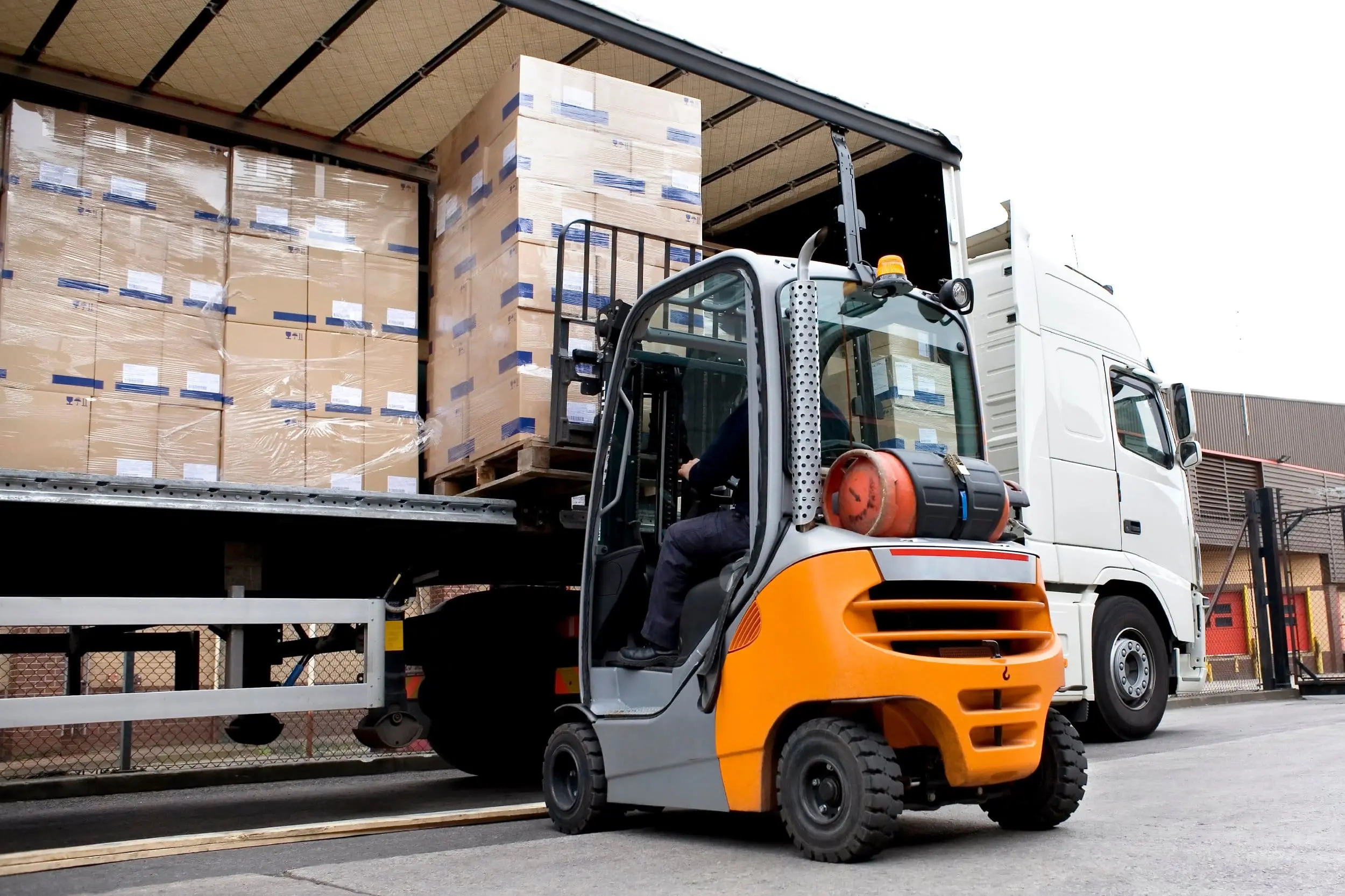Outbound Transportation Guide: Processes, Challenges, and Solutions for Efficient Supply Chain Management
Outbound transportation plays a pivotal role in moving products from manufacturers to customers. By optimizing this process, businesses can enhance customer satisfaction, reduce costs, and remain competitive.
In this comprehensive guide, we’ll explore the processes, challenges, and solutions associated with outbound transportation, helping you streamline your operations and meet customer expectations.
What is Outbound Transportation?
Outbound transportation, also known as outbound logistics or outbound freight, refers to the process of moving finished goods from a manufacturer or distributor to customers, retailers, or other points in the supply chain. This crucial step ensures that products reach their intended destinations efficiently and cost-effectively.
The significance of efficient outbound transportation cannot be overstated. It directly impacts customer satisfaction, inventory management, and overall business performance. By optimizing outbound logistics, companies can reduce costs, improve delivery times, and gain a competitive edge in the market.
Main Processes of Outbound Transportation
Outbound transportation involves several key processes that work together to ensure smooth operations:
- Warehousing: Proper storage of finished goods before shipment.
- Inventory Management: Tracking and controlling stock levels to meet demand.
- Order Fulfillment: Picking, packing, and preparing orders for shipment.
- Transportation: Moving goods from warehouses to their destinations.
- Delivery/Last-Mile Delivery: The final step of getting products to end customers.
Relationships in Outbound Transportation
Successful outbound transportation relies on strong relationships with various stakeholders, including:
- Distributors
- Wholesalers
- Retailers
- End customers
These relationships are crucial for ensuring smooth operations, effective communication, and customer satisfaction throughout the supply chain.
Comparison Between Outbound and Inbound Logistics
While both inbound and outbound logistics are essential parts of the supply chain, they differ in several key aspects. The chart below compares inbound vs. outbound logistics:
| ASPECT | INBOUND LOGISTICS | OUTBOUND LOGISTICS |
| Focus | Raw materials and components | Finished products |
| Role | Supply management | Distribution management |
| Activity | Procurement and receiving | Order fulfillment and outbound shipping |
| Strategic imperative | Cost reduction and quality control | Customer satisfaction and revenue |
Outbound Logistics Challenges
Outbound logistics is crucial for business success, but it also comes with its own set of complex challenges that can impact efficiency and customer satisfaction:
Coordinating Operations
One of the primary challenges in outbound transportation is coordinating the complex interplay between production, storage, and distribution. As production levels fluctuate and customer demand shifts, logistics managers must be able to scale operations accordingly. This requires a high degree of flexibility and responsiveness.
Solution: Implementing advanced software and automation systems can help connect production capacity to storage availability and customer demand. Transportation Management Systems (TMS) and Warehouse Management Systems (WMS) can provide real-time visibility and facilitate better decision-making.
Achieving the Seven Rs
The concept of the “Seven Rs” is crucial in outbound logistics:
- Right product
- Right customer
- Right quantity
- Right condition
- Right place
- Right time
- Right cost
Meeting all these criteria consistently is a significant challenge that requires precise planning and execution.
Solution: Develop an integrated management process that leverages data-driven decision-making. Utilize analytics tools to forecast demand, optimize inventory levels, and improve delivery performance.
Managing Inventory Costs
Balancing inventory levels to meet demand without incurring unnecessary holding costs is a constant challenge in outbound logistics.
Solution: Implement robust inventory management practices, including:
- Tracking key metrics (sell-through rate, inventory turnover)
- Utilizing safety stock calculations
- Employing demand forecasting techniques
Controlling Transportation Costs
Transportation often represents a significant portion of outbound logistics costs. Managing these expenses while maintaining service levels is crucial for profitability.
Solution: Consider the following strategies:
- Analyze historical spending patterns.
- Leverage dynamic pricing models.
- Negotiate volume discounts with carriers.
- Explore freight marketplaces for competitive rates.
Meeting Rising Customer Expectations
Today’s consumers demand fast, free, and transparent delivery experiences. Meeting these expectations while maintaining profitability is a growing challenge for businesses.
Solution:
- Implement real-time order tracking systems
- Offer multiple delivery options to balance speed and cost
- Focus on last-mile delivery optimization
- Prioritize clear communication throughout the delivery process
Collaboration and Communication
Effective outbound transportation requires seamless collaboration between various departments and external partners.
Solution:
- Implement collaborative planning tools.
- Establish clear communication protocols.
- Conduct regular cross-functional meetings.
- Utilize integrated supply chain visibility platforms.
How to Optimize Your Outbound Logistics Operations
Optimizing outbound logistics operations is essential for staying competitive in today’s fast-paced business environment. By implementing the following strategies, companies can enhance efficiency, reduce costs, and improve customer satisfaction throughout their outbound transportation processes.
Technology Adoption
Embrace modern warehouse management systems (WMS) and transportation management systems (TMS), which can work together to provide synergistic benefits such as better route planning, load optimization, and real-time tracking.
Route Optimization
Utilize advanced algorithms to determine the most cost-efficient routes for delivering goods to customers or distributors.
Partnership with Third-Party Logistics Providers (3PLs)
Leverage the expertise and resources of specialized logistics providers to enhance your outbound transportation capabilities.
Sustainable Practices
Implement eco-friendly transportation methods to reduce your carbon footprint and appeal to environmentally conscious customers.
Continuous Improvement
Regularly analyze and refine your transportation processes to identify areas for improvement and adapt to changing market conditions.
Outsource Your Outbound Logistics Operations with WSI
Partnering with a specialized provider like WSI can offer significant advantages for businesses looking to overcome transportation challenges and optimize their outbound logistics.
WSI’s comprehensive logistics solutions include:
- Access to 75,000 carriers and hundreds of thousands of trucks
- Cutting-edge Transportation Management System (TMS) for enhanced efficiency and cost-effectiveness
- Expertise in LTL (Less than Truckload) and FTL (Full Truckload) shipments
- Specialized services for refrigerated freight, hazardous materials, and high-value commodities
- A team of logistics experts dedicated to optimizing supply chains
By leveraging WSI’s extensive network and advanced technology, businesses can meet extreme demand, achieve nationwide scale, and ship quickly and cost-effectively.
Outbound Transportation FAQs
What is an example of outbound transportation?
An example of outbound transportation is a manufacturer shipping finished products from their warehouse to retail stores. For instance, a computer manufacturer transporting laptops from their distribution center to various electronics retailers nationwide is engaging in outbound transportation.
What is inbound and outbound cargo?
Inbound cargo refers to raw materials, components, or unfinished goods transported into a company’s facilities for production or storage—for example, parts arriving at a car factory.
Outbound cargo comprises finished products shipped from a company to distributors, retailers, or end customers. For instance, completed vehicles leave the car factory for dealerships.
How do you account for outbound freight?
Accounting for outbound freight typically involves the following steps:
- Classify it as an expense on the income statement, usually under “Cost of Goods Sold” or as a separate line item called “Shipping and Handling.”
- Track all related costs, including carrier fees, fuel surcharges, and packaging materials.
- Use accrual accounting to match expenses with the revenue they help generate.
- Consider whether to use FOB (Free on Board) Shipping Point or FOB Destination to determine when to record the sale and associated shipping costs.
- Regularly reconcile shipping invoices with your records to ensure accuracy.
- A robust accounting or transportation management system (TMS) can be used to automate this process and provide detailed reports.
Remember, the specific accounting method may vary depending on the company’s size, industry, and accounting practices. It’s always best to consult a certified accountant for precise guidance tailored to your business.
Contact WSI for All Your Transportation Needs
Efficient outbound transportation is crucial for business success in today’s competitive marketplace. By understanding the logistics, challenges, and solutions associated with outbound processes, companies can optimize their operations, reduce costs, and improve customer satisfaction.
Don’t let inefficiencies hold your business back. Reach out to WSI today to streamline your outbound logistics, reduce costs, and meet rising customer demands with ease.
About the Author

Marla Rose
Marla Rose Clendenin is a creative writer, editor, and producer who turns ideas into clear, conversational content, particularly for e-commerce retail, beverage, and healthcare brands. She has led content strategies for award-winning digital campaigns and hosted a podcast investigating the intersection of pop culture and marketing. Aside from typing furiously on her laptop, you can catch her at a comedy show or adding new recipes to her amateur food blog.



